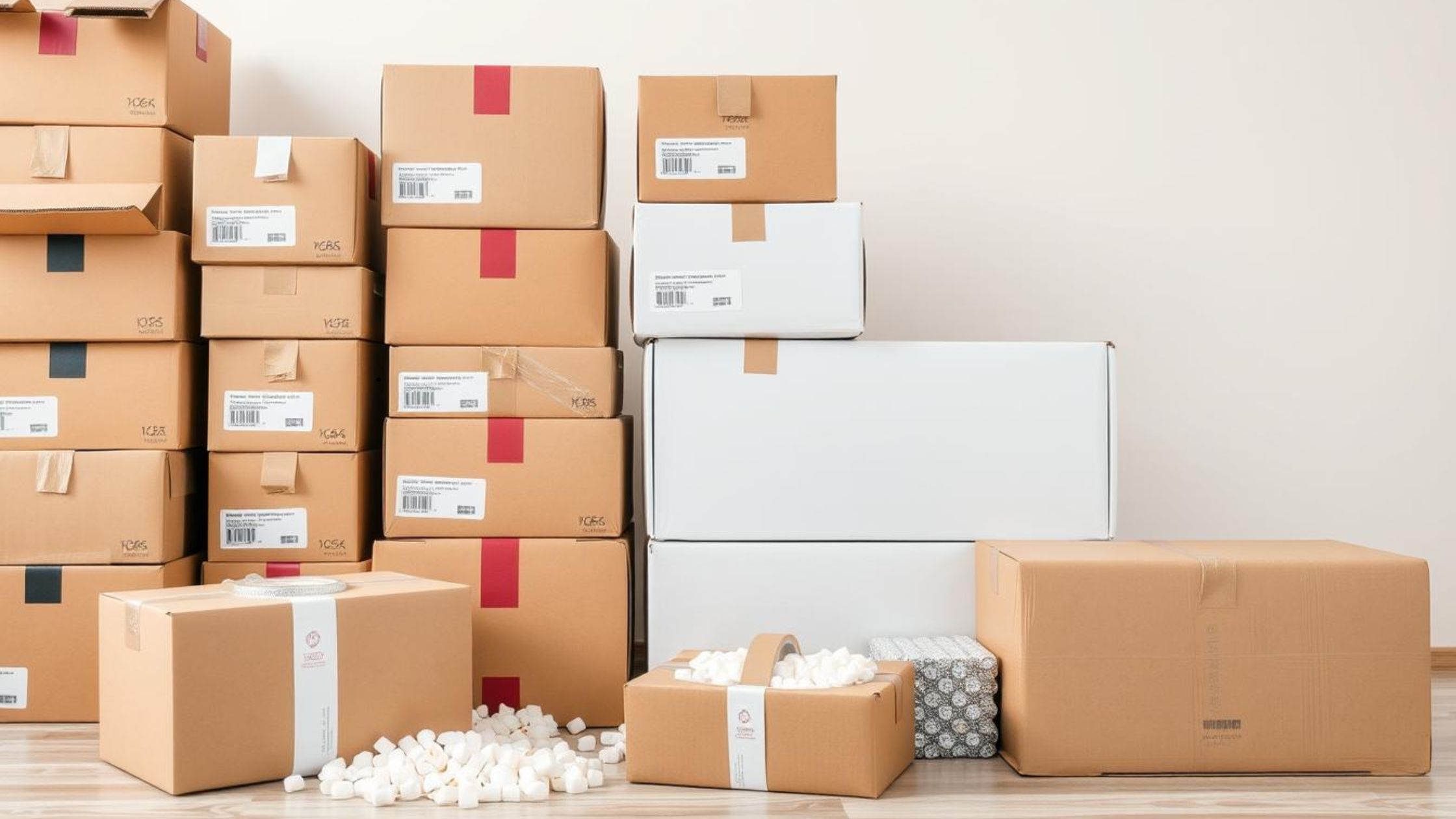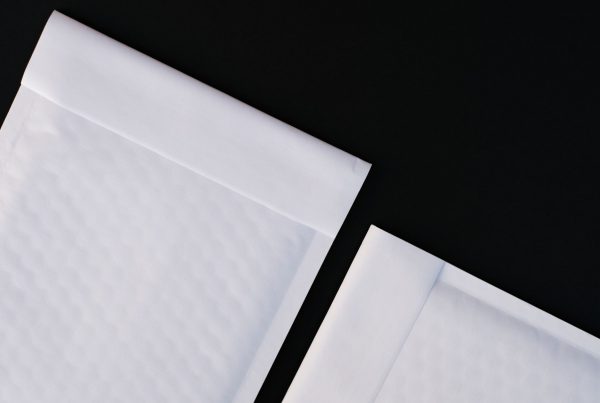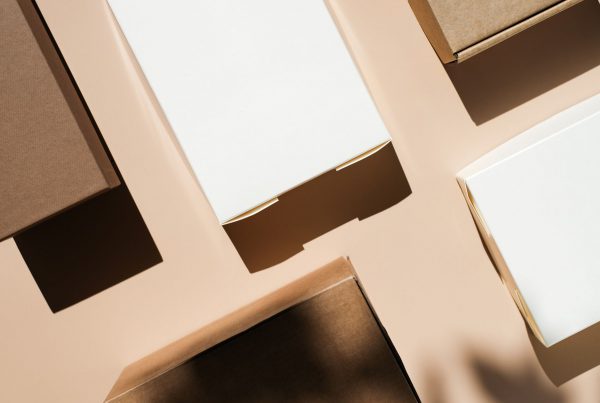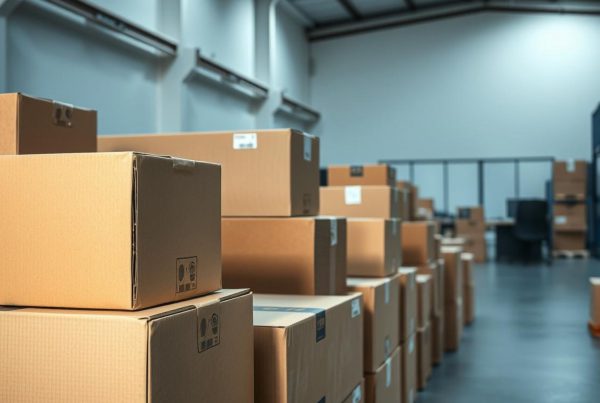Ever thought about how much a suitable shipping box matters? It’s not just about making things easier. It’s key to keeping your products safe and making customers happy. The right boxes can also boost your brand’s image.
Knowing your shipping box options is vital for safe delivery. You’ve got standard cardboard boxes and rigid double-walled corrugated boxes. Double-walled boxes are great for heavy or fragile items because they’re extra strong. Lighter items might do well in chipboard or paperboard boxes.
We’ll explore the details of picking the perfect boxes to ship. They should fit your products well and make customers happy. The correct box can make shipping smoother, reduce complaints, and help your business grow.
Key Takeaways
- Double-walled boxes offer superior protection against punctures and impacts compared to single-walled options.
- Utilizing the recommended protective material can significantly reduce product damage during shipping.
- Choosing the right size for boxes can prevent product damage by avoiding undersized or oversized issues.
- New boxes are preferred over used ones to ensure maximum strength and reliability.
- Understanding the characteristics of various box types helps select adequate packaging for diverse products.
Introduction to Safe Shipping Practices
Getting your products to their destination without damage is key. With a 30% chance of mishandling, good packaging guidelines are vital. It’s essential to focus on making sure products are shipped securely.
Think about the risks of shipping. Vibration and movement cause 25% of damage claims. Using strong packaging can greatly lower these risks. Items sensitive to temperature can also be damaged, affecting 20% of them.
Moisture damage is another big issue, causing 15% of returns. Good packaging can cut damage claims by 50%. Using standard boxes can save on shipping costs by over 20%.
For fragile items, extra cushioning can reduce breakage by 40%. But, labeling packages as “HANDLE WITH CARE” can raise costs by 20%. Using bubble wrap can reduce damage risks by up to 70%, but multiple layers are best for a 60% decrease in damage.
Here’s a quick guide to safe shipping practices and packaging guidelines:
| Practice | Impact |
| Standard-sized boxes | Improve space efficiency by 20% |
| High-quality materials | Reduce fragile item damage up to 70% |
| Cushioning layers | Decrease breakage by 40% |
| Proper sealing tape | Lower box opening likelihood by 40% |
| Custom box use | Enhance branding but increase packaging costs by 30% |
Following these tips can make your shipping process better and safer. Good, safe shipping practices protect your items and make customers happier.
Understanding the Different Types of Shipping Boxes
When shipping products, knowing the types of boxes is key. Each item needs its own protection and look. We’ll look at cardboard, corrugated, and mailer boxes.
Cardboard Shipping Boxes
Cardboard boxes are light and made from chipboard. They’re great for less fragile, lighter items like cosmetics. They’re also cost-effective, making them popular in stores.
For online shops, these boxes can make the unboxing special. This can help build customer loyalty.
Corrugated Boxes
Corrugated boxes are strong and have many layers. They’re perfect for shipping heavy items over 15 lbs. These boxes protect items well during shipping.
They’re a top choice for those who want their items to arrive safely. This is important for customers who value quality.
Mailer Boxes
Mailer boxes are great for shipping small items. They’re easy to put together and keep items safe. They’re perfect for fast shipping needs.
Mailer boxes are essential for services that send items regularly. They help make the shopping experience better.
| Type of Box | Material | Ideal For | Weight Capacity | Eco-friendliness |
| Cardboard Shipping Boxes | Chipboard | Lighter items | Up to 5 lbs | Moderate |
| Corrugated Boxes | Corrugated material | Heavier items | Over 15 lbs | High |
| Mailer Boxes | Kraft paper or cardboard | Small items | Up to 10 lbs | High |
How to Choose the Best Boxes to Ship Products
Choosing the right shipping boxes is critical for safe delivery. The size, weight, and type of items you ship matter a lot. Knowing these details helps make shipping smoother and keeps customers happy.
Consider the Size of the Box
Choosing the right box size is vital. A box that’s too small can crush fragile items. On the other hand, a box that’s too big can cause items to move around, increasing damage risk. Using the right size box can cut damage by up to 50%.
Also, 80% of customers love the unboxing experience. A well-fitting box can make a big difference in how they see your brand.
Assess the Weight of Your Products
Think about the box weight and the items you’re shipping. Heavy items need strong boxes, like corrugated cardboard, to avoid breakage. Using a lightbox for heavy items can be a disaster, leading to damaged goods and unhappy customers.
Evaluate the Fragility of Your Items
For shipping fragile items, a snug box with plenty of padding is key. About 30% of packaging waste comes from oversized boxes. But, choosing the right size can reduce movement by 70%.
This careful choice can greatly lower damage risk. It helps build trust with your customers.
Essential Packing Materials for Secure Shipping
When you’re ready to ship products, picking the right packing materials is key. Different packing materials help keep your items safe and sound. They provide the cushioning and support needed to prevent damage during transport.
Key Types of Secure Packing Materials:
- Packing Peanuts: These fillers stop items from moving inside boxes. Start by filling the box halfway, then add your item, and finish with more peanuts for a snug fit.
- Bubble Wrap: It comes in various sizes. Smaller bubbles protect against scratches, while larger ones offer better cushioning. Use a 5/16-inch bubble roll as the first layer of protection.
- Air Pillows: These fillers keep items apart and protect against vibrations. They’re great for filling voids in boxes.
- Packing Paper: It’s good for wrapping items to prevent scratches. It also helps keep the shipment intact.
- Tape: High-quality tape is needed to seal boxes. It keeps boxes closed and adds extra protection against opening during transport.
Using these secure packing materials correctly is important. Aim for at least 2 inches of filler on all sides of the carton. Label boxes with permanent markers to keep them organized and prevent mistakes.
Professional movers suggest using furniture pads and moving blankets for larger items. Plastic resealable bags are also useful for keeping small parts organized and attached to main furniture pieces.
By choosing the right packing materials and using them correctly, you can ensure your shipments arrive safely. This way, they’ll be ready for their next journey.
| Type of Packing Material | Purpose | Recommended Usage |
| Packing Peanuts | Prevents movement and absorbs shocks | Fill halfway, place item, fill top, then shake gently |
| Bubble Wrap | Cushions fragile items | Use depending on item fragility (small for scratches, large for padding) |
| Air Pillows | Fills voids and absorbs vibrations | Place alongside items to keep them separated |
| Packing Paper | Wraps items to prevent scratches | Use for wrapping delicate items before boxing |
| Tape | Secures boxes | Seal all seams and edges for extra security |
Best Practices for Packing Boxes for Shipping
Packing boxes for shipping right can make a big difference. It ensures your items arrive safely. Learning how to pad boxes and wrap fragile items is key. Let’s dive into these important steps.
How to Properly Pad Your Boxes
Proper padding is essential for protecting items during shipping. Boxes can lose up to 60% of their strength after shipping. So, it’s important to use good padding.
Each box needs at least two inches of padding on all sides. For fragile items, three inches is better. Good padding materials include:
- Packing peanuts
- Styrofoam
- Thick kraft paper
Using multi-walled boxes for heavy items helps keep them safe. For items over 70 pounds, standard packing peanuts might not be enough. Heavy-duty tape is needed to seal the boxes well.
The H-tape method is great for sealing. It involves taping over seams on both sides and down the middle. This makes the seal stronger.
Wrapping Techniques for Fragile Items
Wrapping fragile items carefully is important. For glassware or electronics, use at least three inches of bubble wrap. This protects them from bumps.
Make sure to tape the wrapping down well before putting it in the box. Packages wrapped in paper might lose labels during shipping. Always include a duplicate shipping label inside the package.
| Practice | Recommendation |
| Box Type | New cardboard boxes; double-walled for fragile/heavy items |
| Padding | At least 2 inches; 3 inches for fragile items |
| Tape Type | Heavy-duty brown tape or strapping tape |
| Labeling | Complete addresses; duplicate inside package |
| Fragile Item Wrapping | Minimum 3 inches of protective wrap |
Following these practices keeps your items safe and gives you peace of mind during shipping.
Where to Source Quality Shipping Supplies
Finding good shipping supplies is key for businesses or anyone shipping items. Many places offer great choices for buying shipping boxes and more.
Specialized stores have a wide range of products, like strong boxes and bubble wrap. Local stores are handy and let you see items before buying.
Online stores are popular, too. Amazon offers free shipping and returns for Prime members. This makes it easy to find good deals without losing quality. Sites like PackagingSupplies.com have over 17,000 products and offer wholesale prices for big orders.
Companies like The Boxery are known for their wide selection and custom options. They help meet specific shipping needs. Staples is also good, with free returns and affordable custom packaging for businesses that ship a lot.
For those who care about the environment, EcoEnclose is a great choice. They offer eco-friendly products, even if they don’t have as many options. Their focus on being green is impressive.
Buying quality shipping materials saves money and makes your shipments look professional. Choosing trusted sources for reliable products that protect your items during shipping is important.
Conclusion
Secure shipping solutions are key in today’s fast world. Using the right materials, like FEFCO standard cardboard boxes, keeps goods safe. This also keeps your packaging confident and safe.
Following the best shipping practices makes everyone’s life easier. Fast strapping methods save materials and meet safety needs. This builds trust and reliability with your customers.
Don’t forget that being green is important in shipping today. Using recyclable materials and avoiding waste helps the planet. By doing this, you can win customer loyalty and grow your business.
| Strategy | Benefits | Considerations |
| Strapping | Efficient packaging minimizes material use | Requires proper equipment for implementation |
| Cardboard Boxes | Versatile, widely used for various products | Standard sizes must be assessed for product fit |
| Recyclable Materials | Promotes sustainability, aligns with consumer values | Ensure proper disposal methods are communicated |
About The Boxery
The Boxery is your go-to for shipping solutions and top-notch packaging supplies. We offer over 10,000 products, ensuring you find durable boxes. Whether you need standard, heavy-duty, or special boxes, we’ve got you covered.
Choosing The Boxery means getting durable boxes at great prices. Prices start at just $0.24 for standard sizes. Plus, our expert advice helps meet your specific shipping needs. Our heavy-duty boxes protect your items well, with discounts for more oversized orders.
We know quality is key in shipping. That’s why our boxes are made from over 90% recycled materials. Our mailers are made from fiber, too. By choosing theboxery.com, you get reliable packaging and support for sustainable practices.
FAQ
What types of boxes should I use to ship my products securely?
The box type depends on your product’s weight and its fragility. For lighter items, cardboard boxes work well. Heavier products need corrugated boxes. Smaller, delicate items are best in mailer boxes.
How can I ensure my products arrive without damage?
To avoid damage, choose the right box size. Use bubble wrap and packing peanuts for extra protection. Seal the box well with tape to keep items safe during shipping.
Do I need to use packing materials when shipping?
Yes, packing materials are key to protecting your items. Bubble wrap, foam inserts, and packing peanuts absorb shocks. They prevent items from moving inside the box, reducing damage risk.
Where can I find quality shipping supplies?
Find quality supplies at shipping stores, online, or bulk suppliers like The Boxery. It’s vital to pick reliable sources for durable packing materials.
How can I determine the correct size box for my items?
Measure your items carefully. A box that’s too small can crush them. A box too large can cause items to move, increasing damage risk. Aim for a snug fit with enough padding.
Can I buy shipping boxes in bulk?
Yes, buying in bulk saves money and keeps your shipping consistent. Suppliers like The Boxery offer bulk options for various boxes and packing materials.
What is the best way to wrap fragile items for shipping?
Wrap fragile items in multiple layers of bubble wrap for protection. Use tape to secure the wrapping. Make sure items fit well in the box, adding more materials if needed.
Why is proper shipping packaging important for my business?
Good packaging protects your products and makes customers happy. When items arrive safely, it builds trust and encourages more business.





Recent Comments